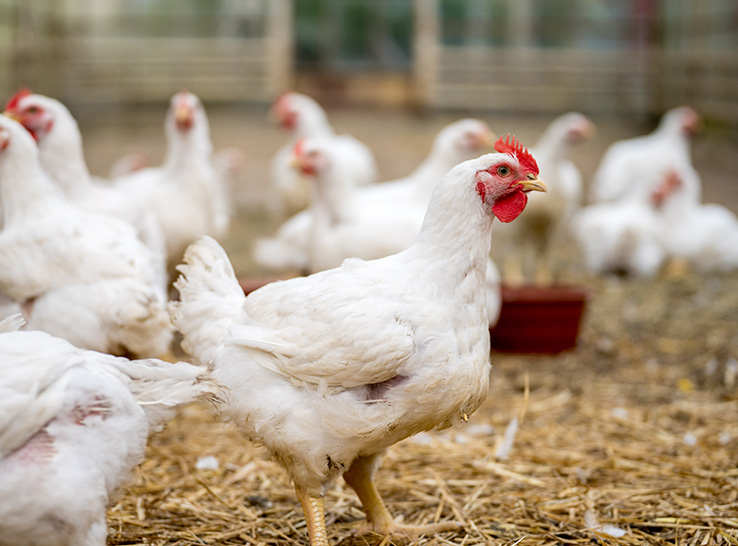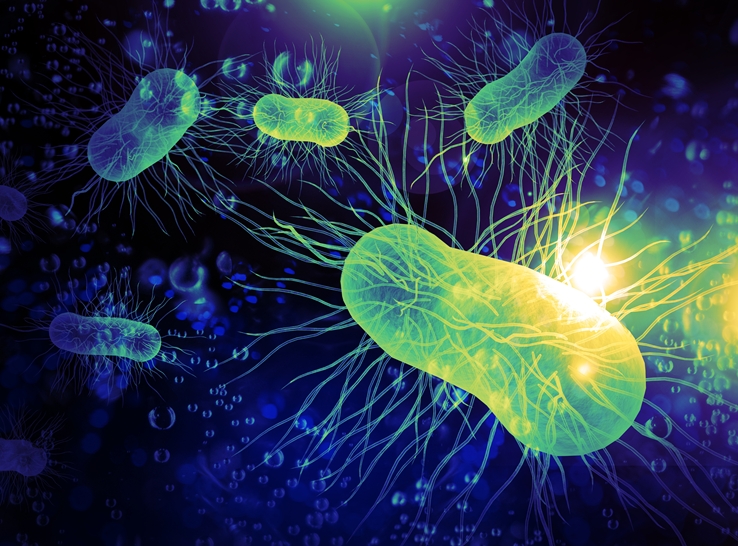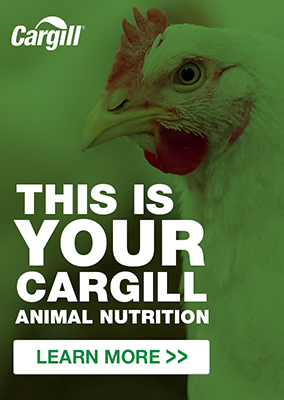An interview with Manuel Da Costa, PhD, poultry strategic marketing and technology lead for Cargill Animal Nutrition
There has been a significant increase in research around the gut microbiome of farmed animals, including poultry, in recent years. What conclusions does this point to?
MDC: It’s clear that the composition of the gut microbiota is linked to how birds perform in the field, both positively and negatively. Indigenous microbiota can suppress the growth of pathogens,1 as well as regulate hormones, metabolism and mineral absorption.2 In practical terms, this impacts how effectively birds process the nutrition from their feed and how well they can fight off disease challenges that can reduce performance and even result in mortality in the worst cases. It can also affect the animals’ resilience to stressors in their environment.
It’s becoming clear that it’s possible to positively manipulate the gut microbiome through tailored feeding programs and other interventions. In some cases, these approaches can speed up the microbiome’s maturation and make birds more resilient from an early age.
Microbiome analysis in animals tends to produce huge amounts of data, which can often be quite complex. How does Galleon™, Cargill’s poultry microbiome intelligence tool, help generate useful insights for producers?
MDC: When you consider the gut microbiome of animals, you’re talking about a lot of different bacteria and a lot of interaction between them. But the big question that remains is, even if you have this information, how do you act on it? There’s great potential to generate insights.
That’s where Galleon comes in. Galleon is an AI-powered microbiota analysis platform that can identify the microbiota profile associated with different scenarios in the field. This means we can identify microbiota differences, for example, between good- and bad-performing flocks and measure the impact of each intervention.
The use of a nonlinear AI model with a huge database behind it — we have more than 45,000 samples analyzed from 23 countries around the globe — allows us to provide practical recommendations in feed composition, management or health interventions, helping farmers to select the best practices for their flocks.
What we want to do is turn a question mark into “lightbulb moments” where we put things in place that help us improve the processes.
Another useful aspect for producers is that the sampling process is easy and non-invasive, allowing us to repeatedly sample birds and follow them through the production process.
Can you expand on some of the practical insights that producers could expect to get from the technology?
MDC: The tool helps us answer questions like why complexes or houses with the same type of management, feeding programs and vaccination are performing differently. This can also help greatly on the food-safety side, by understanding how the prevalence of Salmonella and Campylobacter are influenced by the rest of the microbiome. From there, we can formulate different tiers of strategies, backed up by data, that can help mitigate the risk of foodborne pathogens.
The analysis helps connect performance and health components with nutrition, management and other interventions, which is challenging. For example, it can help us understand holistically the impact of bringing in less expensive feed ingredients to the production system without impacting the performance of birds.
It can also improve the evaluation and selection of feed-additive programs. With so many of these programs available these days, using the microbiome insights can help narrow down producers’ focus and understand which ones might work better for them.
How does using Galleon work in practice with producers?
MDC: Making insights come to life starts with a conversation with a producer, understanding their needs and what we need to address. From there, the sample collection process is fairly standard, using cloacal swabs that are just put in tubes from collection kits, which then go to the lab for the microarray DNA analysis.
The difference is that when you put the data in the Galleon model, it generates different types of recommendations that allow our team to go back to producers and help them initiate interventions that will address the issue.
There are three parts to the analysis process: example data from our database, our machine-learning algorithm and then the customer data that comes from the sample processing. That generates key indicators and different classifications via the model. From there, you can produce predictions and recommendations.
Are there any examples of where the technology has proved useful in the field?
MDC: There are good examples of how Galleon can be used in a food-safety context. In a customer field trial on six broiler farms, groups of birds were fed one of two diets. The diets were identical for the first three of five phases. But in one diet, for the last two phases at 28 days, a major ingredient accounting for 30% of the formulation was changed.
What we saw using the Galleon analysis was that, even though the performance results didn’t show significant differences between the treatments, the food-safety parameters revealed that there was an increased risk of Campylobacter and Salmonella after the new feed ingredient was introduced in the experimental diet. So, this is a way of using the tool for risk evaluation.
In another study, we looked at introducing feed-intervention strategies, which were allocated to farms either positive or negative for Campylobacter.3 The work consisted of three production cycles within the same houses: In the first, we used Galleon to identify the microbiota profile associated with negative and positive Campylobacter farms. Using the recommendations provided by the Galleon platform, on the second cycle we tested a feed additive, which successfully reduced the Campylobacter but showed an incidence of Escherichia coli and Citrobacter.
To improve the results even further, for the third cycle, we used a specially formulated pre-starter diet plus the feed additive, which resulted in reductions of Campylobacter and no E. coli and Citrobacter spikes.
There are other microbiome-analysis technologies available. What sets Galleon apart?
MDC: The use of AI technology powered by our unique database provides an exclusive tool that can provide practical recommendations to overcome farmers’ challenges. The microarray component is not dissimilar to what else is out there, but it’s when you run the machine-learning model that you really extract the most information out of it, which helps you put it in a commercial perspective.
Another crucial aspect is that this is not tied to a specific product. With some of the US offerings in the past, a company might do tests, then offer you product A or B to fix whatever problem they found. Galleon is a much more realistic tool. It brings health and nutrition together, so you add considerably more layers to the optimization and decision-making in the field. It allows producers to look into their formulas, feed additives, programs and management that other tools couldn’t accommodate.
Although not widely available in the US up to now, the technology has been around since 2016. Have the models used changed in any way over that time?
MDC: It’s certainly an ongoing process, and continual improvement is the goal of machine learning more generally. The more data that goes into it, the more it can accommodate that. For example, the technology is currently available for broilers, but we’re expanding to layers and turkeys. The model will adjust, and we’ll be able to provide even more depth in understanding how to optimize production and bird health.
Editor’s note: Content on Modern Poultry’s Industry Insights pages is provided and/or commissioned by our sponsors, who assume full responsibility for its accuracy and compliance.
1 Yadav S, Jha R. Strategies to modulate the intestinal microbiota and their effects on nutrient utilization, performance, and health of poultry. J Animal Sci Biotechnol. 2019;10:2.
2 Dai D, et al. Intestinal microbiota of layer hens and its association with egg quality and safety. Poult Sci. 2022;101(9):102008.
3 https://besd-bir.org/assets/uploaded/Ubek6_Proceedings.pdf








